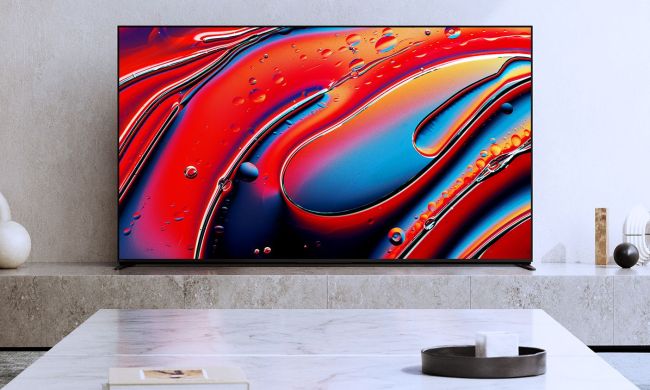In addition to a selection of new Cyber-shot cameras, Sony today announced serious expansions to its Bravia flat-panels television line, and finally set both a price and availability date on its computer-free Bravia Internet Video Link, which will enable users to put Internet video on their compatible Bravia televisions without needing to go through a computer.
First up, Sony has released pricing and availability details for its Bravia Internet Video Link (BIVL), which it unveiled at the CES trade show back in January. The basic idea behind the BIVL is to make it simple for users to tune into and watch Internet-based video without the whole process being mediated by a computer. The BIVL rides on the back of a compatible Bravia television (apparently connecting via USB) and plugs into Internet services via Ethernet to an existing home broadband network. Users access Internet-based video using Sony’s Xross Media Bar interface (which, Sony repeatedly reminds us, won a Technical Emmy!) already seen on the PlayStation 3 and PSP; the idea is to make accessing Internet video virtually the same process as tuning into standard video offerings. Content for the BIVL will initially be provided by AOL, Yahoo, and Grouper, along with in-house content from Sony Pictures Entertainment and Sony BMG Music, including some high-definition content. Sony says the Bravia Internet Video Link will be available for about $300 in July of 2007; Sony says the majority of it’s 2007 Bravia line will be compatible with the BIVL—even when hung on the wall.
With that in mind, Sony announced seven new Bravia high-definition televisions today, all of which will be compatible with the Bravia Internet Video Link add-on, although the company offered no pricing information. New offerings will include 46- and 40-inch V-series, 1080p LCD televisions, 720p S-Series models in 26-, 32- 40-, and 46-inch sizes, and a class-free 32-inch KDL-32XBR4. Units will start shipping during the “spring” and “summer”—we’re presuming northern hemisphere seasons—with the larger S-series units leading the way.
The V-series sets offer 1,920 by 1,080 resolution and automatic upscaling of 480i video sources; the units also feature a 10-bit panel offering finer gradations than 8-bit panels and Sony’s Live Color Creation with WCG-CCFL backlight; plug into them with HDMI, PC, and HD component inputs. The S-series will offer 1,366 by 768 (720p) resolution; three 32-, 40-, and 46-inch models will sport Live Color Creation with the WCG-CCFL backlight, while the 40- and 46-models will sport the 10-bit panel found in the V-series. Left out of the V and S Series, the KDL-32XBR4 offers the 10-bit panel and Live Color Creation technologies with Sony’s Motionflow 120Hz motion compensation technology which interpolates a new frame between each of the typical 60 frames, eliminating motion blur and so-called “judder;” the 32-inch display will also sport three HDMI inputs and 1080p compatibility.
Not content with the seven new Bravia models, Sony also announced plans to expand the Bravia line by rolling its WEGA micro-display televisions, projectors, and home theater products under the Bravia name. First up, former-WEGA now-Bravia 3LCD microdisplay televisions, offering profiles some 22 percent slimmer than earlier prodjection models and adding future compatibility with the Bravia Internet Video Link module. The 50-inch KDF-50E3000 and 46-inch KDF46E3000 models supports 1080p content, while the 37-inch KDF-37E3000 supports 720p content; all units feature dual HDMI inputs. A new HDF-370H1000 model is designed to have a shot at slipping into existing television cabinets—at 37 inches, it’s about the same height and width (and 10 inches slimmer) than Sony’s older KV-32FS170 CRT-based television. The KDF-37H1000 also has one thing none of Sony’s other new Bravias have—a price tag. Expect it in May for $1,300.


